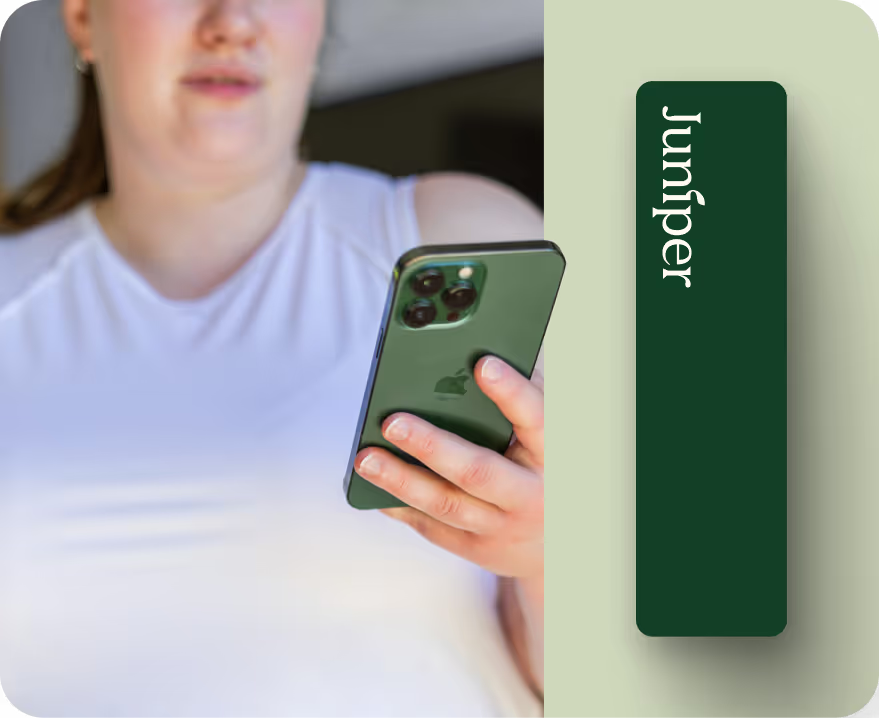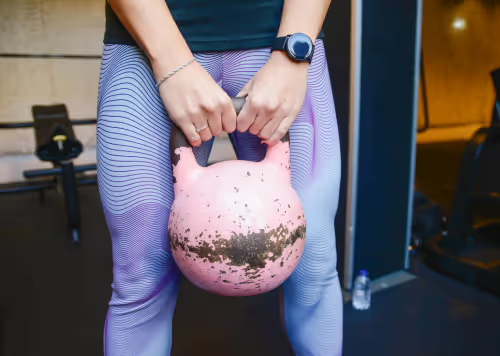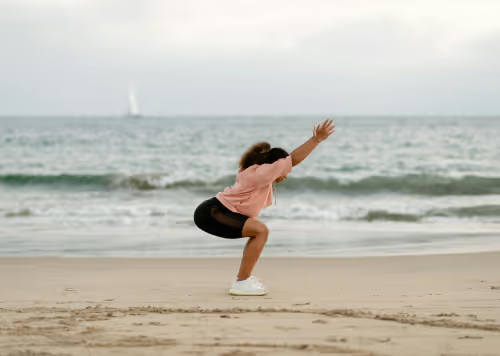Cold therapy uncovered: Is cryotherapy worth the chill?
Ice baths are part of a broader wellness trend: cryotherapy.


Key takeaways
- Cryotherapy involves exposing the body to extreme cold to reduce inflammation, relieve pain, and support muscle recovery through methods like ice baths or cold chambers.
- The treatment may help improve mood, boost metabolism, and enhance skin health by triggering hormonal and circulatory responses to cold exposure.
- While generally safe, cryotherapy can cause side effects such as numbness, redness, or in rare cases, frostbite or nerve damage, so medical guidance is recommended.
We've all heard of ice baths, and maybe even tried one. Although the thought of plunging into freezing cold water might make you shiver (literally), the practice is believed to offer many benefits.
Well, ice baths are part of a broader wellness trend: cryotherapy.
The question is, is the hype around cryotherapy justified? Read as we explain how it works, what it can do for your body, and what you can expect during a session.
What is cryotherapy?
Cryotherapy—also known as cold therapy—involves exposing your body to extreme cold temperatures for health and wellness, recovery, or cosmetic purposes.
It's used for everything from improving common skin conditions like sunspots to relieving muscle soreness, and even treating certain immune conditions [1].
There are a few types of cryotherapy treatments:
- Whole body cryotherapy: This involves exposing your entire body to extremely cold, dry air (usually -100°C to -150°C) for a few minutes. It's done in a specialised cold chamber or cryosauna, and athletes often use it to speed up post-exercise recovery, reduce muscle pain, and ease sports injuries.
- Cold water immersion: This involves submerging your body in cold water, usually between 10 and 15°C, for a short period. Most people start with a couple of minutes and gradually work their way up to 10-15 minutes. The ever-popular ice baths fall within this category, but so do cold showers and swimming in a cold lake.
- Localised cryotherapy: Like the name suggests, this targets a specific part of your body that might be sore or inflamed. You can use something as simple as an ice pack or gel pack, or go high tech with specialised cryotherapy devices.
- Cryosurgery: This one's a medical-grade procedure performed by a healthcare professional. In a nutshell, they use extreme cold (often liquid nitrogen) to freeze and destroy abnormal tissue, like warts or precancerous skin lesions.
How does cryotherapy work?
The science behind cryotherapy is that the extreme cold triggers a protective response that's designed to keep you alive—what's commonly known as "fight or flight."
In doing so, cold exposure sets off a series of effects that help reduce inflammation and give your body (and mind) a recovery boost.
Here’s a snapshot of what happens behind the scenes:
Your blood vessels tighten
Exposure to extreme cold causes vasoconstriction, meaning your blood vessels narrow, which reduces the blood flow to your skin surface, as well as any injured areas.
The result is less inflammation, swelling, and pain—the same reason why we're told since childhood to apply ice to an injury to calm it down.
Your blood rushes back
Once the cold exposure ends, your blood vessels reopen, and freshly oxygenated, nutrient-rich blood is pumped back into your tissues.
This process flushes out metabolic waste (substances your body produces while keeping you moving, but doesn't actually need), which can calm sore muscles and help them bounce back quicker.
Your hormonal and nervous system react
Remember the fight or flight response we touched on before? Well, it stimulates your nervous system and triggers the release of adrenaline and noradrenaline [2].
Together, these hormones can make you more alert, improve your mood, and increase endorphins for short-term pain relief.
Over time, and with regular sessions, cryotherapy can also lower cortisol (so your stress levels go down) and increase testosterone (so your muscles feel stronger and more energised).
Plus, cold exposure may give your metabolism a quick boost by increasing your metabolic rate (the speed at which your body burns calories), which can contribute to weight loss [3].
Cellular effects in medical cryosurgery
Cryosurgery targets cells individually, which doesn't happen in a cryosauna or when you apply an ice pack to a bruise.
The extreme cold causes ice crystals to form inside the cells, causing them to rupture and ultimately die.
It's this cell destruction that allows doctors to remove things like precancerous lesions or small tumours without having to cut them out surgically.
What are the uses and potential benefits of cryotherapy?
We've already touched on some of the most common uses of cryotherapy, particularly muscle recovery and pain relief. But it doesn't end there.
Cold exposure has a range of other purposes:
- Numb nerve endings and relieve joint pain
- Targeting skin concerns like sunspots and small blemishes
- Help tighten skin, reduce signs of ageing, and reduce puffiness
- Improve mood and energy levels
- Lower cortisol and, as a result, reduce stress levels
- Destroy abnormal or diseased tissue, from benign lesions like warts and skin tags to malignant ones
- Boost metabolism and burn calories as the body returns to its usual temperature
- Reduce body fat through a non-surgical procedure called cryolipolysis (or fat freezing)
What to expect during a whole-body cryotherapy session
Before your session, you'll likely go through a quick consultation, mainly to check for any health conditions and make sure cold exposure is safe for you.
Then, you'll change into minimal clothing (usually swimwear or activewear) and put on protective gear like gloves, socks, and slippers, just to keep vulnerable areas safe from injury.
You'll be asked to dry yourself thoroughly, since moisture can increase the risk of frostbite.
Once you're all geared up and completely dry, it's time to step into the cryotherapy chamber. Your entire body will be enveloped in cold air, except for your head, so you can breathe comfortably.
Sessions are pretty quick—usually 2-4 minutes—but intense. The subzero temperatures might feel a little shocking at first, and you may notice some tingling.
A pro tip here is to move around gently. It keeps blood circulating and makes those minutes in the chamber feel slightly more manageable.
A staff member will be monitoring you the whole time, ready to help you exit safely if anything feels off.
Once you step out, you'll likely experience some immediate effects. You may feel energised, or if you went in with sore muscles, they may start loosening up right away.
Your body then warms back to normal, blood flow returns to usual, and you feel extra invigorated and alert.
Risks and possible side effects of cryotherapy
Cryotherapy is generally safe for most people. But like any other treatment, it does come with some risks.
As part of your initial consultation, a staff member at the wellness centre (or doctor, if you're going in for cryosurgery) will inform you of the potential side effects of cryotherapy.
But let us give you a bit of an overview.
On the milder side of potential side effects of cryotherapy are things like numbness, tingling, irritation, and redness—usually temporary and not a reason for concern.
Then, there are more serious risks that aren't as common but still worth knowing [5]:
- Blistering and scarring
- Nerve damage and long-lasting numbness
- Changes in skin pigmentation
- Infection
- Temporary spike in blood pressure, headache, and dizziness
- Frostbite and tissue damage
- Cramping and bleeding, particularly with cervical cryosurgery
Who may not be suitable for cryotherapy?
Again, cryotherapy is safe for most people—but there are a few exceptions.
Cold exposure can exacerbate or trigger certain medical conditions, so it's important to check with a healthcare professional first. These include [6]:
- Cold urticaria
- Raynaud's disease
- High blood pressure
- Cryoglobulinemia or multiple myeloma (blood disorders)
- Poor circulation
- Open wounds or skin infections
It's also best to skip whole-body cryotherapy while pregnant. The extreme cold can stress your cardiovascular system and impact your blood pressure and flow, both crucial for you and your baby's health. Plus, there’s not enough research to know exactly how cold exposure may affect a developing baby, so it's better to play it safe.
It's also worth mentioning that dark-skinned patients may be more prone to pigmentation changes and scarring, so extra caution is advised.
Alternative treatments to cryotherapy
Alternatives to cryotherapy will depend on what you're trying to address. A few suggestions:
- For muscle pain and recovery: Heat therapy, contrast therapy, foam rolling, stretching, massage, low-impact movement, or over-the-counter pain killers
- For skin conditions: Topical treatments, chemical peels, laser therapy, or medical removal by a dermatologist in the case of skin tags or precancerous lesions
- For mood and energy levels: Light therapy, exercise, yoga, or meditation
- For fat reduction: Exercise and diet, non-invasive laser treatments, or liposuction
Unlock better weight loss outcomes
Losing weight is tricky, and keeping it off can be even trickier. While cryotherapy can be a great way to recover from exercise, it may not provide the results you are looking for on its own.
That's why approaching weight loss holistically can help you feel good, inside and out. The Juniper Programme combines weight loss medication with dietitian-led health coaching and tracking, so you can lose weight and reach your goals for good.
Kickstart your weight loss journey with Wegovy or Mounjaro, two groundbreaking weight loss medications that mimic the GLP-1 and GIP hormones, respectively, to help control cravings, delay stomach emptying, and keep you feeling fuller for longer. These clinically backed treatments help members experience up to 23% body weight loss.
Plus, we have a team of expert dietitians and health coaches you can consult with to help you work through any challenges you're experiencing during your weight management journey. This approach sets you up for sustained weight loss, rather than a quick-fix solution.
This means you can continue to enjoy the things you love in moderation without ever feeling deprived.
Ready to see if Juniper is right for you? You can check your eligibility here.
Image credit: Pexels

in 1 year
- No GP referral
- Ongoing expert support
- Trusted by 150,000 members worldwide

- https://www.cancer.gov/publications/dictionaries/cancer-terms/def/cryosurgery
- https://learn.genetics.utah.edu/content/cells/fight_flight/
- https://diabetesjournals.org/diabetes/article/69/Supplement_1/2022-P/57397/2022-P-Partial-Body-Cryotherapy-Acutely-Augments
- https://pmc.ncbi.nlm.nih.gov/articles/PMC7563463/
- https://www.medicinenet.com/what_are_the_side_effects_of_cryotherapy/article.htm
- https://www.healthline.com/health/rheumatoid-arthritis/cryotherapy-rheumatoid-arthritis











